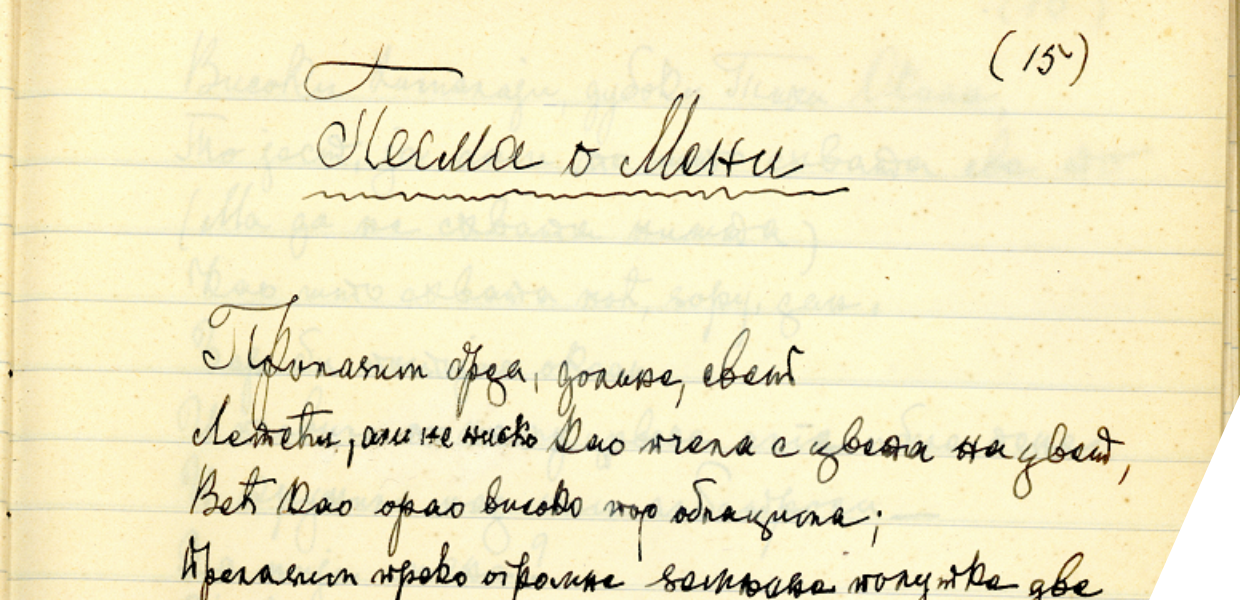Thank you so much for speaking to us! Tell us a bit about your institution.
Beba: The National Library of Serbia is the country's national, central, research, and general scientific library. It is the parent library institution for all libraries in Serbia. It is the first institution of culture established by the Serbian state, and this year celebrates 190 years since its foundation.
You have recently run the project Being Woman in the Time of the Pandemic - why was the project started, and what does it aim to achieve?
Tamara: Our library is an active member of the Conference of the European National Librarians (CENL), a significant organisation for national libraries in Europe. CENL reacted promptly to the COVID-19 pandemic and other challenges for libraries by opening several funds which aimed to support its members to respond to the new worldwide landscape after 2020. This included a new Hidden Stories Fund in 2021. In this new fund, we saw an opportunity to create some new collections: we knew we wanted to work more on women's issues and were still very affected by the COVID-19 pandemic. So, it was logical to merge the two and to shed the light on women during the pandemic.
The project included four lines of activities: Collection Days (storytelling), web resources, a series of lectures and a blog. We aimed to make a similar event to the Migration Collection Day which we organised in 2018 together with Europeana. Unfortunately, because of the pandemic, this was not possible, so this activity moved online. We collected 25 stories/interviews from various women, together with photos illustrating what was an escape from the reality of COVID in their lives.
Beba: We wanted to highlight current gender issues and try to raise the voice of women from hidden to much more visible. This is a pioneering endeavour on this topic in our national library. Of course, the COVID pandemic is of particular importance as a time that exacerbates any pre-existing crises.
What role does digital technology, practices or engagement play in this work?
Tamara: This work is completely powered by digital. The women’s stories are in digital format, together with the objects, as well as the web archive collection. The lectures were recorded and published online with digital tools and technology. All the results of the project were published on the project web page. The whole project documentation was managed digitally on the cloud.
Beba: I would just like to add that the importance of digital is indisputable even without the pandemic. These times have underlined that digital has become the most visible format nowadays.
How did you celebrate Women’s History Month in your institution?
Tamara and Beba: In the project framework, we held a series of lectures under the title, 'Being Woman in the Time of the Pandemic: Extension of the Domain of the Struggle'. Four women and one man (two university professors, one retired lieutenant colonel, one scholar and one historian) spoke from their point of view about women's experiences during the COVID-19 crisis, pointing out the additional issues they have faced in both battlefields, at work and at home from traditional gender roles. One lecture was dedicated to the role of women in war crises in ancient times to highlight the gender stereotypes and the division of gender roles, but also to help us in better understand the issues we dealt with during the pandemic.
Can you share with us a woman who inspires you either from history or is still alive and explain why?
Tamara: Jelena Dimitrijević, Serbian writer, traveller and feminist was a true trailblazer, quite unique and very different from the majority of women in the 19th century patriarchal Serbian society. I truly admire her courage and life attitude. We used her Poem of Myself, written in New York in 1920, for the graphical identity of this project.
Beba: There are many! One is, Ksenija Atanasijević (1894–1981), the first recognized major female Serbian philosopher, and the first female professor at Belgrade University, where she graduated. During her teaching career, she was a committed feminist both in theory and practice. She was a member of the Serbian Women's League for Peace and Freedom, the Women's Movement Alliance and editor of the first feminist journal in the country Ženski pokret, published from 1920 to 1938. Persecuted by all the regimes she lived in, she remained consistent with herself.
What advice do you have for cultural heritage institutions who would like to acknowledge, surface and highlight women’s history in their own collections?
Beba: Libraries are especially suitable for highlighting women's history and injustices they have faced. In my experience, librarianship is a mainly female profession and users of library services are predominantly women. There are several examples of how library services and projects have been used for various programs to improve education, economic stability, and advancement for women (such as INELI - International Network of Emerging Library Innovators.) Of course, the same could be applied to other cultural institutions.
Tamara: Open your institutions for women, listen to them, record their practices and preserve them as priceless collections for the coming generations. Make digital space for women’s history collections, create editorials, share on social networks to inspire others. Fight for gender equality everyday, but keep the quality first.
Thank you Tamara and Beba! You can explore the project Being Woman in the Time of the Pandemic on the Library's website.


